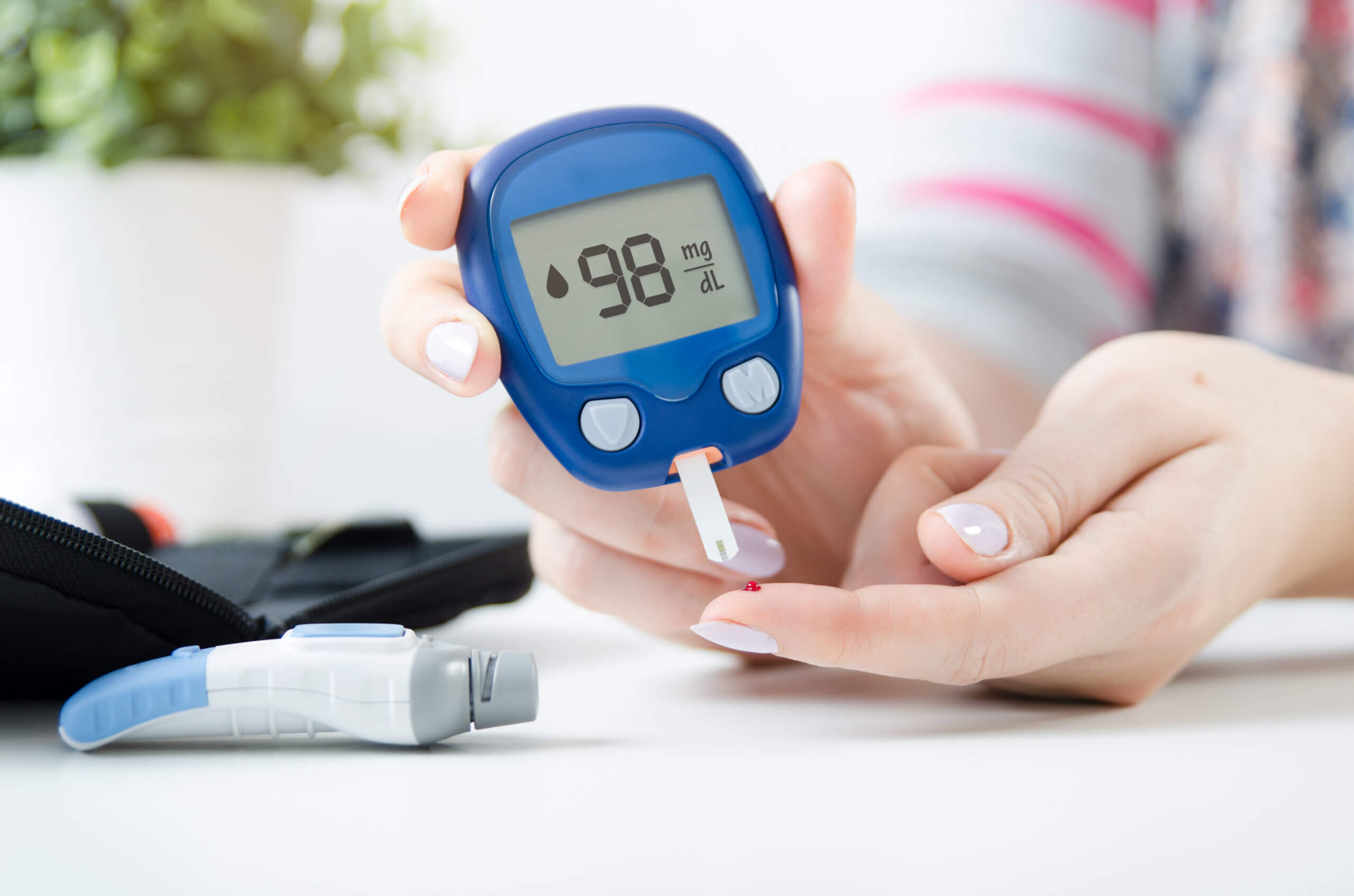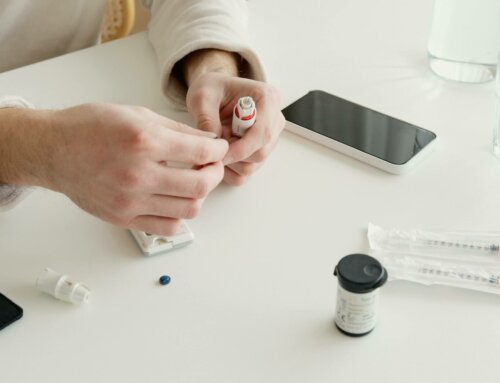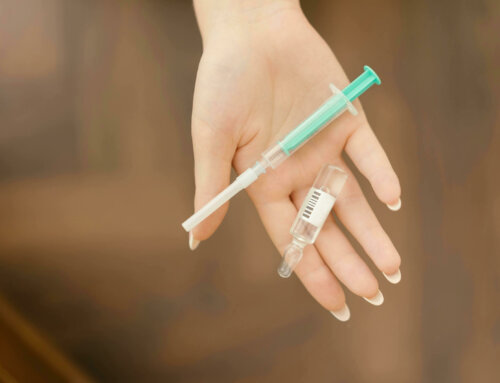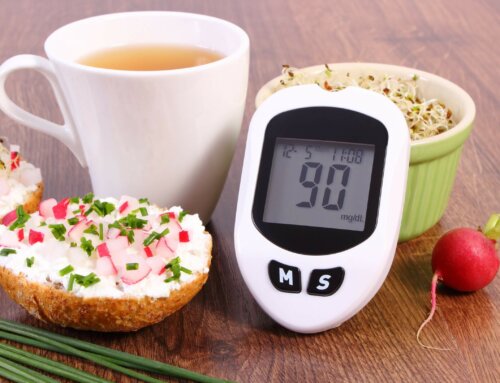Daily, there is updated information concerning diabetes. At ADW Diabetes, we want to keep you informed so that you can take better control of your diabetes. Knowledge is your personal power when it comes to your health.
Read on to get answers to some common diabetes questions.
1. Why do high blood sugars (can signify uncontrolled diabetes) make me so thirsty?
The hallmark sign of diabetes is a blood sugar imbalance. When your diabetes is under control, you should have a normal level of thirst. When your blood sugars are high possibly because of the foods that you choose or the quantity that you eat, skipping your diabetes medications, your thirst will increase.
The term diabetes is from the ancient Greek word meaning “siphon” or “to pass through.” This refers to excessive urination being a common symptom of uncontrolled diabetes. Other reasons for increased thirst with diabetes may include not drinking enough water, sweating too much, having an illness or infection, vomiting or eating salty and spicy foods.
With increased urination from high blood sugars comes more thirst. When you have diabetes, you can’t use the sugar from the food properly, so it collects in your bloodstream. Your kidneys can’t filter that much glucose. The excess glucose is excreted through urine pulling water from other tissues and causing dehydration.
The extra sugar causes your kidneys to go into overdrive to make more urine to get rid of the excess sugar. This causes more water to be lost which makes you feel dry, parched, and thirsty. Another term for increased thirst with diabetes is “polydipsia.” The brain tells you to drink more so your body can get rid of the excess sugar through urination.
The “urine/thirst cycle” continues until the blood sugar finally goes down. Constant high blood sugar spikes can cause your arteries to narrow and harden, which could eventually lead to a heart attack or stroke.
By controlling your blood sugars through exercise which increases your insulins sensitivity, proper eating and taking your diabetes medications correctly, you should not experience this problem. Always check blood sugars when thirst is high and report to your health care provider.
2. What has The American Heart Association recently reported about drinking “artificially sweetened beverages” which are generally recommended to people with diabetes?
New research from the American Heart Association finds “artificially sweetened beverages may negatively impact your heart health.” This was published in the March 5, 2024 circulation, “Arrhythmia and Electrophysiology Journal”. It states, “artificially sweetened drinks increase the risk of atrial fibrillation (a heart arrhythmia), as well as strokes, heart failure and other heart problems.”
There was a 20% increase in chances of atrial fib when “2 liters of diet drinks were consumed each week.” Some people drink a liter per day. Over 200,000 adults were studied. By 2030, 12.1 million Americans will have atrial fib. Another study showed “higher amounts of xylitol (specific artificial sweetener) a sugar alcohol found naturally in plants, may raise heart attack and stroke rates.” Over 3,000 people were analyzed in the US by The Cleveland Clinic.
Published in The European Heart Journal, “Xylitol causes platelets to clot.” These can lead to blood clots, pulmonary embolism, strokes and heart attacks. Xylitol also helps prevent plaque build-up on teeth and decreases tooth decay. It is found naturally in strawberries, lettuce and oats. Xylitol is in sugar-free chewing gum, sugar-free mints, sugar-free candies, baked goods and toothpaste. Last year, “erythritol (another sugar alcohol) showed similar effects on platelet sticking and clumping.” More research and investigation need to be done.
What to do?
- Try to limit artificially sweetened products to avoid potential harm and risks, especially if you already have heart disease. People with diabetes are at higher risks for heart disease. Some of the more common artificial sweeteners to avoid are sucralose, aspartame, xylitol, saccharin and acesulfame.
- Insulin response may play a role.
- Talk to your health care provider or a dietitian about your personal situation.
- Drink more unsweetened tea, herbal tea, coffee, iced or cold brew coffee, unsweetened flavored seltzers and still or sparkling water.
- Add fresh fruit chunks or slices of vegetables to your water.
- Make ice cubes from watermelon or grapes.
3. Is it true that high temperatures and excessive summer heat can increase cardiac deaths? (leading cause of death with diabetes)
Yes, it has been documented that excessive heat “disrupts the cardiovascular system” increasing your risk of strokes and death. Over 82,000 people were studied in China showing that “as heat rose so did strokes.” This was published in The Journal of The American Medical Association (JAMA).
Heat is a profound body stressor. High humidity makes the situation even worse. The heart risk events double when the temperature is 92 degrees F as compared to 54 degrees F. Heat affects how blood vessels contract and dilate. “Stroke rates were especially high (an added 7% increased risk) in elderly women exposed to nighttime heat.” Signs of heat problems include dry mouth, muscle cramps, lack of perspiration, confusion, dizziness and a rapid heart rate.
What to do?
- Stay hydrated with plenty of cool water.
- Exercise outdoors with caution.
- Keep a glass of water by your bedside at night.
- Use a ceiling fan for extra air flow.
- Run the A/C at a cooler temperature at night.
- Take cool baths or showers before bed.
- Use just a sheet or a lightweight blanket instead of a comforter.
- Wear lightweight and lose fitting clothing with SPF (sun protection) during the day.
- Wear white or light color clothing.
- Wear cotton pajamas and avoid synthetic fabrics which increase perspiration.
- Place cool, wet washcloths on your forehead.
- Put frozen cucumber slices on your eyelids.
- Carry a small battery-operated hand fan.
4. Can heat exposure lead to increased body inflammation?
We already know that chronic diseases including diabetes are linked to systemic inflammation. New data presented at The Epidemiology, Prevention, Lifestyle Cardiometabolic Scientific Sessions states, “Heat exposure may trigger an immune response leading to increased inflammation.”
Cardiovascular deaths are projected to increase by 162% in the US from now until 2065. “The biggest burden will be on lower socioeconomic groups and the elderly living in metropolitan areas. Even minor exposure to higher temperature contribute to changes in immune markers. Again, high humidity makes the situation worse.
People with diabetes and high blood pressure are at an elevated risk for adverse health effects of the extreme heat.” Your health care provider should be talking to you especially as you are aging. Discussions should be customized, and patients should be made aware of this information during the warmer summer months.
5. What does the “Essential 8” of Health mean?
Taking care of your heart will help you benefit your brain. Recently published in the American Heart Association Journal, “The better the cardiovascular health of women in their 40s, the better they will be able to prevent dementia and maintain independent living in their older age.”
Health is more than the “absence of disease.” The worldwide population is getting older due to advances in public health, medicine, and technology. Prevention enhances our range of functioning as we age.
The factors considered as “Essential 8” health indicators include:
- Blood pressure. Keep it in range of 120/80 or less.
- BMI or body mass index. Keep it in the ideal range of 18.5-24.9%.
- Glucose reading, Manage diabetes. A decision between you and your physician. Usually, an A1C of 7% or lower for diabetes control. Test your blood glucose level daily.
- Non-HDL level. Know your number and have it treated with medication if it is high. If healthy and you have diabetes, it should be 100mg/dl or less. If you have known heart disease and diabetes it should be 70 mg/dl or less according to The American Heart Association.
- Physical activity level. Commit to an exercise program of 30 minutes, 5 times a week. Exercise can be broken down into smaller sessions. Include resistance exercise.
- Get regular sleep. 7-8 hours are the recommended amounts.
- Eating. Have a plan that includes fruits, vegetables, whole grains, lean protein, low-fat dairy, unsweetened beverages.
- No smoking. Do not start or if you smoke, quit.
So much can happen to our cells as we age:
- Genes become unstable
- Telomeres grow shorter
- Systemic inflammation occurs
- Bone and muscle loss – osteoporosis and sarcopenia
- Stem cell exhaustion
- Altered cell communication
- Mitochondria dysfunction
- Frailty and fragility appear
- Cognitive impairment happens
When these indicators are monitored and maintained at healthy levels, independence is higher. When all measures are optimal, there is greater freedom from heart disease, a higher quality of life and your total life span increases. In the original guidelines set up in 2010 by the AHA, we went from just treating disease to positive health promotion.
The guidelines were updated in 2022 and now include sleep quality. Unfortunately, as recent as today, less than 1% practice the “Essential 8” in health across all age groups. The focus should be on strategies to help reinforce their success. These guidelines should be practiced by those with diabetes, too. Prevention to avoid treatment.
6. Is there a new medication approved to treat early Alzheimer’s?
As of June 12, 2024, “a key hurdle was met” which allows Donanemab to move further to win full FDA approval. When approved, it will be the second medication after Leqembi (lecanemab) that can slow down early-stage Alzheimer’s. It targets the processes in the brain that lead to “cognitive decline.”
Donanemab is an “amyloid antibody” which clears the brain of amyloid plaque deposits. Amyloid plaques quicken cognitive or brain decline. Over 1,100 patients have been studied and Donanemab showed a “35% slowed decline compared to a placebo.” The patients were able to drive, manage finances and take part in their hobbies more than if they did not take the drug.
Side effects may include “brain swelling, brain bleeding and imaging abnormalities.” By taking regularly scheduled MRIs, your brain can be followed for swelling or bleeding. Another possible side-effect is “an allergic reaction at the infusion site.” The medication is given as an infusion every 4 weeks. More trials are being planned.
At this point, Leqembi is covered by Medicare at 80% with the other 20% is covered by the patient or supplement health insurance plan. The annual cost for this medication is over $26,000 a year. Remember, “studies have shown that type 2 diabetes can be a risk factor for Alzheimer’s disease and other types of dementia.”
The same issues that increase your risk of type 2 diabetes also increase the risk of dementia. They include:
- Obesity
- Heart disease
- Clogged blood vessels
- Circulation problems
- High cholesterol
- High triglycerides
- High blood pressure
“Glucose is not used properly in the brains of Alzheimer’s patients” which is like diabetes. Amyloid plaques, which Donanemab reduces, has been shown to prevent insulin receptors in the brain from doing their job.
We are learning that what is good for your heart is also good for your brain:
- A healthy balanced diet
- Regular activity or exercise
- Remaining socially active and involved
- Challenge your brain with puzzles, reading, learning a new language or instrument
- Protect your head from injuries. Wear a helmet if you bike, use a scooter, ride an ATV or ski
- Volunteer
- Manage stress
- Take your medications as prescribed
- Don’t smoke
- Limit or avoid alcohol
- Include vitamin D, folate, vitamin B6, vitamin B12
- Routinely see your health care provider
- Watch your numbers: blood pressure, blood sugar, weight, waist circumference
- Maintain a balanced life
- Keep up old friendships
- Lower your music
- Sleep
Not everyone with diabetes will develop Alzheimer’s but it is best to lower your chances. We can’t change our age or genetics, but we can make healthful changes.
7. I try to avoid soda and diet soda. Are all sparkling and still waters, both carbonated and non-carbonated, good to drink? If not, why and which are better?
Even though sparkling or still water is better for you than regular or diet soda, there are still some concerns. Sparkling water may cause bloating and acid reflux. Some brands contain high amounts of PFAs (Per-And-Poly-Fluoroalkyl) substances, which are chemicals designed to “withstand water, oil, grease and heat.”
They are great for food packaging but take “at least a century to break down in a human body and even longer in the environment.” Our regular drinking water has had high amounts of PFAs for years and recently the federal government has decided to address the problem.
PFAs leave through your urine, so if you have kidney problems, which is common for people with diabetes, it makes PFA removal even more difficult. PFAs are also found is shellfish like shrimp and lobster as well as in freshwater fish. The larger fish, the more PFAs. They are also found in electronics, moisture wicking fabric in exercise and sports clothes, carpets, new furniture, new car upholstery, water-proof mascara, non-stick cookware and food packaging.
PFAs are linked to cancer, autoimmune disease, and thyroid problems. There are added risks to pregnant women and infants. PFAs can negatively affect cholesterol levels, liver enzymes and how your body responds to vaccines. PFAs are all man-made and have been around since the 1950s. These “super chemicals” that can do anything are most hazardous.
Some commercial sparkling and still water brands that are high in PFAs:
- Bubbly
- LaCroix
- Polar
- Canada Dry
- Perrier
- Dasani
Some sparkling and non-sparkling brands that are low in PFAs are:
- Pellegrino
- Mountain Valley
- Waterloo
- Spindrift
- Evian
- Fiji
- Acqua Panne
- Proud Source
Keeping hydrated especially, during the warmer months, is extremely important especially when you are older and have a chronic disease.
8. Does each state have rules about an individual driver’s license when you have diabetes?
The federal government imposes no specific restrictions on an individual with diabetes driver’s license when they manage it with diet, exercise and medications. Certain states “may have special licensing rules about medical conditions including diabetes.” Rules vary widely with each state taking their own approach to “determine medical fitness and ability to drive.” Find out which, if any, special licensing rules apply in your state.
The biggest problems include:
- Severe hypoglycemia with low blood sugar symptoms includes irritability, dizziness, confusion, blurry vision, sweating, fatigue, shakiness, anxiety, headaches, weakness and numbness. Each of these may affect your driving.
- Hypoglycemic unawareness. Having no symptoms which indicate low blood sugars but blood sugars dropping.
- Neuropathy. Tingling, numbness, burning and lack of sensation in your legs and feet making it difficult to drive.
- Retinopathy. Retinal problems which could lead to visual problems and blindness.
- Cataracts. Limit visual acuity especially at night.
What can you do to prevent a problem driving when you have diabetes?
- Check with your individual state. Contact your local Department of Motor Vehicles (DMV) by visit, phone or e-mail.
- Talk to your healthcare provider if you foresee any difficulties.
- Preferably wear a CGM (Continuous Glucose Monitor) or have a meter and supplies available when driving. Do not leave this equipment in the car. Check blood sugar when you have low blood sugar symptoms and pull over. Treat low blood sugar.
- Carry glucose tablets and/or a juice box. Keep snack bars or granola bars in the car.
- Pack a peanut butter sandwich or any food that contains protein, fat and carbohydrates if driving more than 2 hours.
- Identify rest stops and restaurants along the route in case you need a driving break, restroom or more food.
- Carry a diabetes alert card in your wallet or wear a necklace or bracelet with proper identification.
- List your medications in your phone or have a card in your wallet.
- Have an emergency contact person in your phone.
- A designated driver may need to be listed depending on the state.
Most people with diabetes “safely operate motor vehicles without creating any meaningful risk of injury to themselves or others.” A diabetes diagnosis is not sufficient to make any judgements about an individual’s driving capacity. Some people with diabetes may have more risk factors than others, so each person needs to be evaluated as an individual.
The Americans with Disability Act of 1990 requires “individualized consideration of disability.” Car insurance rates should not be influenced or different for those with diabetes unless they have a history of accidents.
It’s hard to keep up with all the information pertaining to your diabetes. Hopefully, this helps!
References:
- https://pubmed.ncbi.nlm.nih.gov/37664644/
- https://www.ncoa.org/article/what-is-alzheimers-how-is-it-treated/
- https://www.healio.com/news/cardiology/20240424/midlife-heart-health-potential-risk-factor-for-early-cognitive-decline-in-black-women
- https://www.healthline.com/health/diabetes/diabetes-thirst
- https://www.healio.com/news/cardiology/20240319/extreme-heat-exposure-may-impair-immune-response-increase-inflammation
- https://www.eatingwell.com/artificially-sweetened-beverages-heart-disease-risk-new-study-8607961
- https://www.medicalnewstoday.com/articles/hot-nights-extreme-temperatures-raise-stroke-risk
- https://www.foodandwine.com/pfas-in-sparkling-water-8640113
- https://www.medicinenet.com/artificial_sweetener_xylitol_link_to_heart_attack/news.htm
- https://www.everydayhealth.com/alzheimers-disease/fda-advisors-recommend-approval-of-a-new-drug-for-early-alzheimers/
- https://alzheimer.ca/en/about-dementia/how-can-i-prevent-dementia/diabetes
- https://wwwmedicalnewstoday.com/articles/diabetes
- https://www.cbsnews.com/news/xylitol-sugar-substitute-linked-to-increased-risk-of-heart-attack-and-stroke-study-finds/
- https://www.health.harvard.edu/staying-healthy/hot-weather-tied-to-increased-odds-of-stroke
- https://www.bernsteinandmaryanoff.com/blog/driving-safely-with-diabetes/
- https://www.medtronicdiabetes.com/about-diabetes/diabetes-and-driving







Leave A Comment